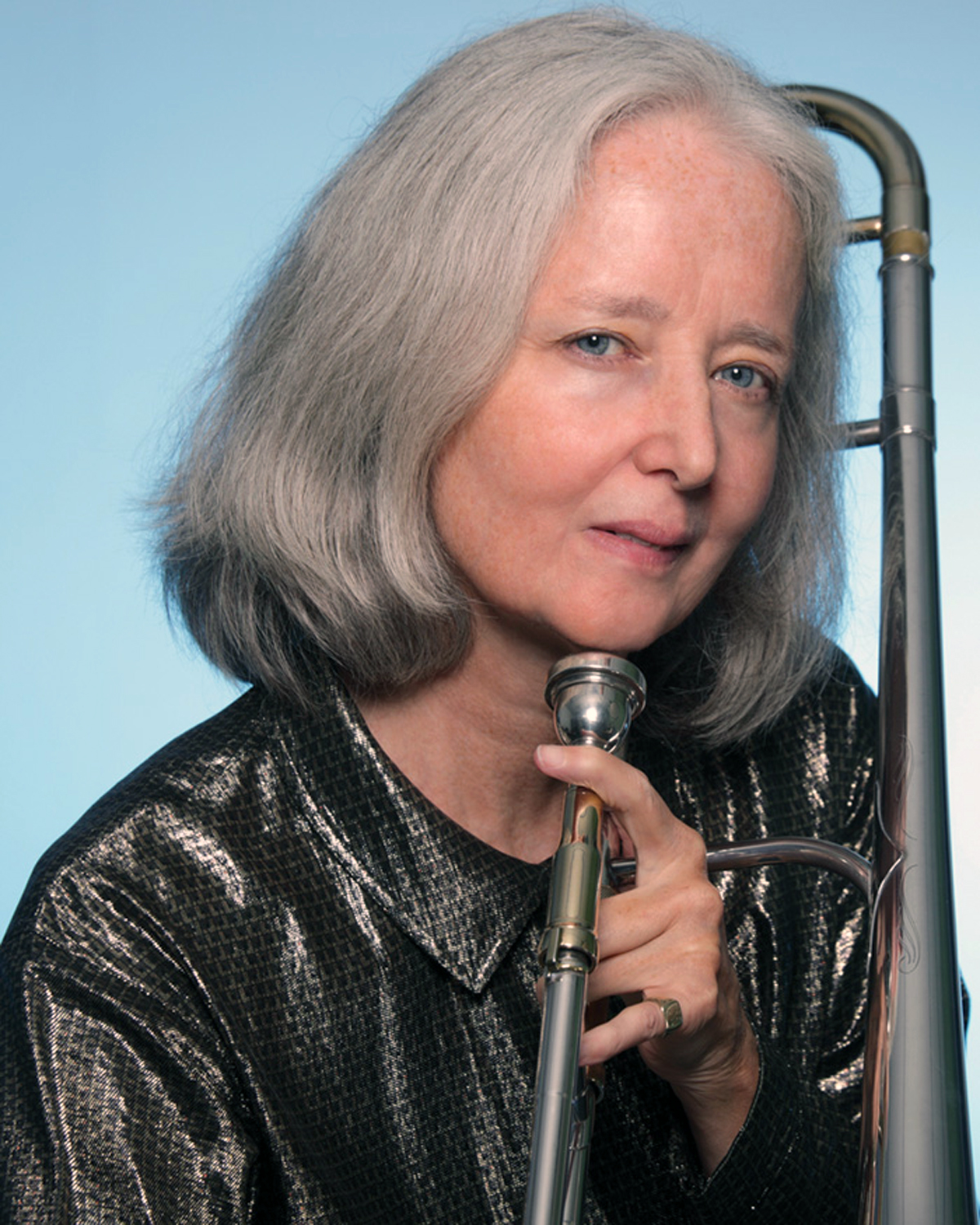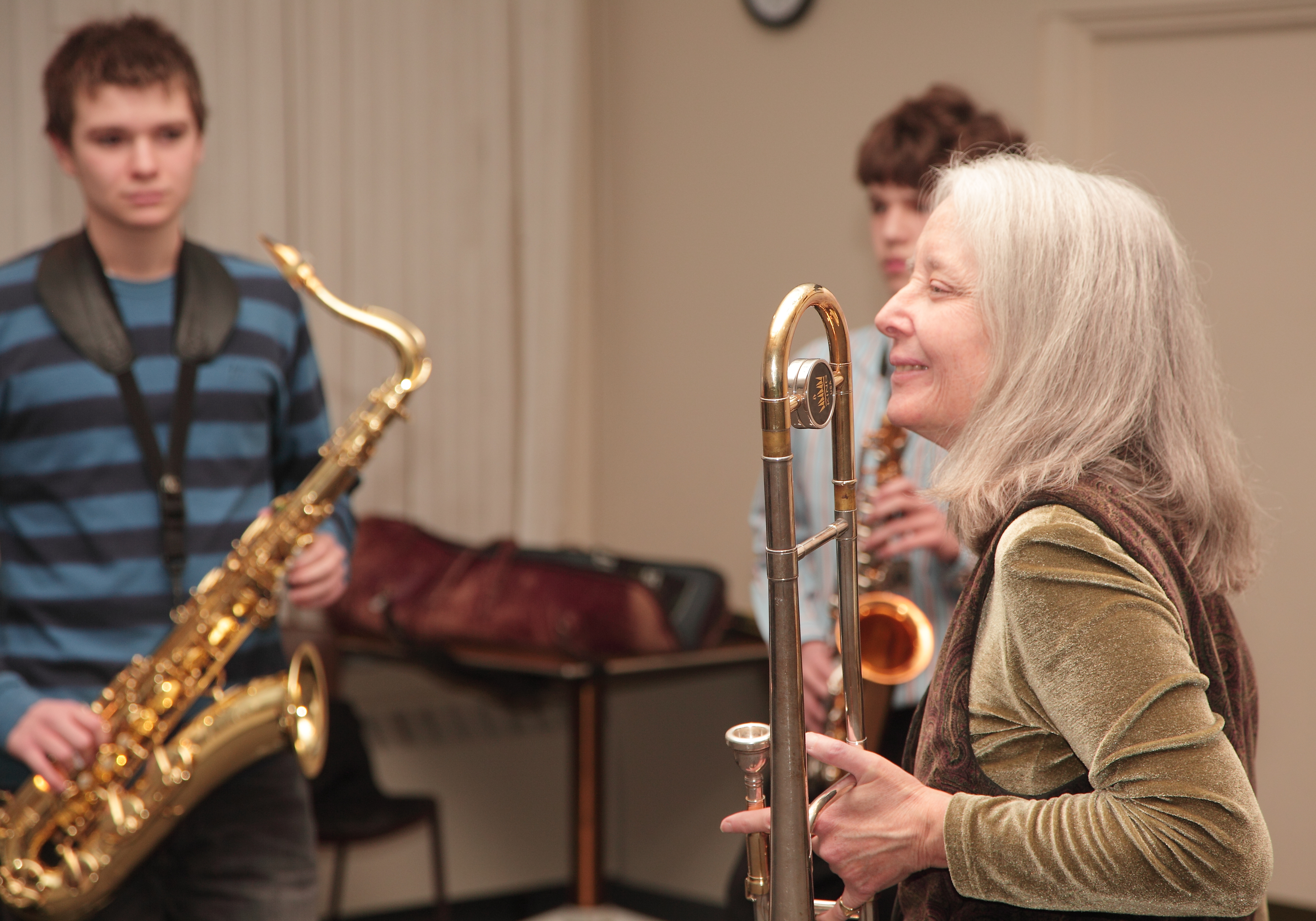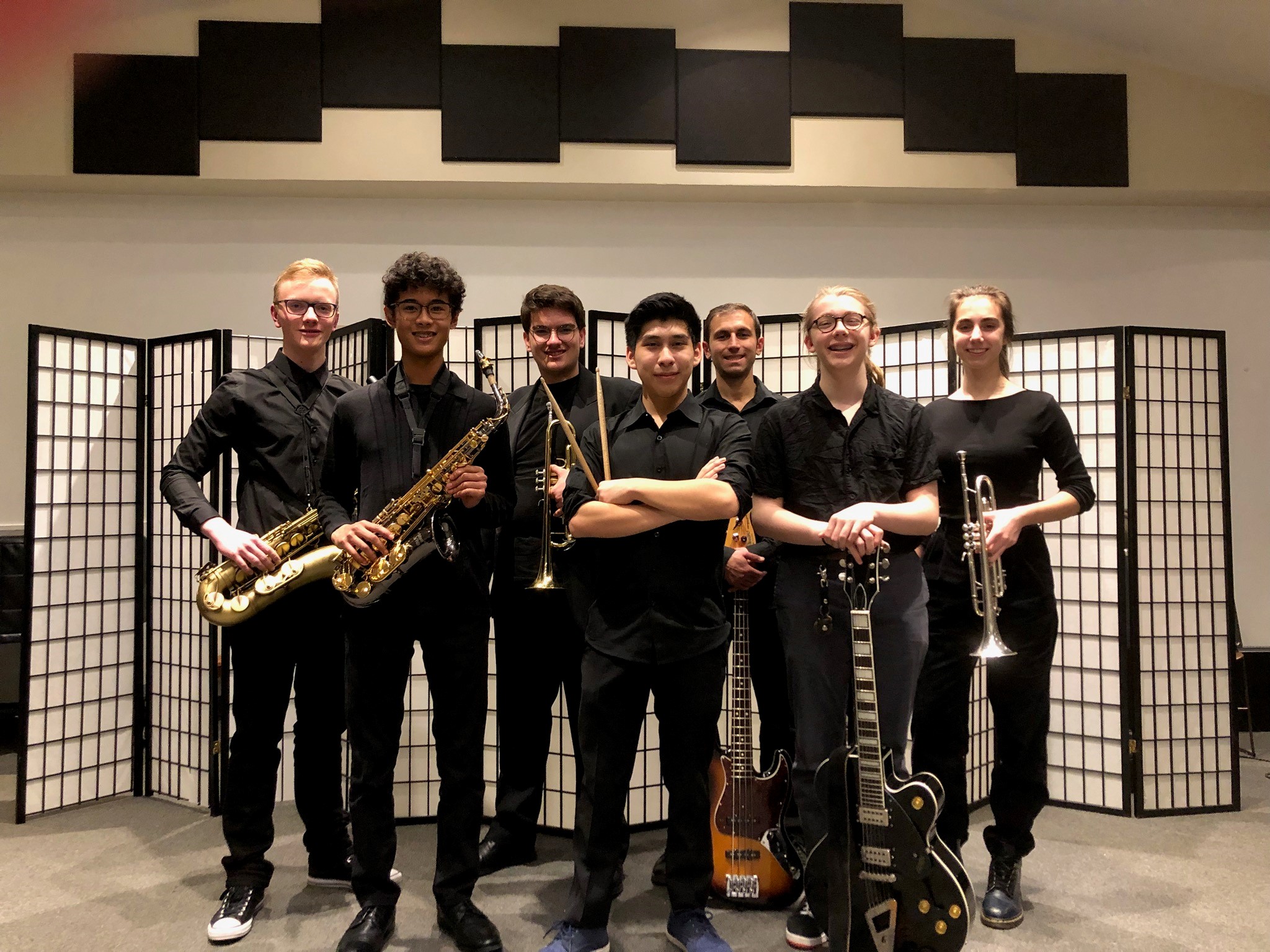MIC's Jazz Studies Program Celebrates 10 years

November 10th, 2021
The Music Institute of Chicago’s Jazz Studies Program is celebrating its 10th anniversary! We had a chance to sit down and talk with Audrey Morrison, Director of the Jazz Studies to hear how the program the program started, where it is today, and where it’s going.
MIC: How did you come to the Music Institute? MORRISON: I was up at Birch Creek, a jazz program in Door County, Wisconsin. Jim Warrick, who had been the jazz band director at New Trier for a long time, heard that the Music Institute was looking for a jazz band director.
MORRISON: I was up at Birch Creek, a jazz program in Door County, Wisconsin. Jim Warrick, who had been the jazz band director at New Trier for a long time, heard that the Music Institute was looking for a jazz band director.
When I found out the job was to run and develop a jazz program from scratch, I was even more interested. What a great gift to be told I can put together my faculty, my dream team, what a way to start a new job!
In addition to the faculty already teaching jazz in their studios, I wanted to add more. I’d been playing jazz in Chicago for more than 30 years, so I knew a lot of people and had a good idea of who would work well.
There were three qualities that were essential: they had to be great players, not dabblers; they had to be extremely good teachers; and, most important, they had to be honorable people. That is a huge part of my philosophy. Several faculty are still with us 10 years later. Overall, in addition to being comparable to any jazz faculty anywhere, this faculty really gets along, and we like each other. We have a good vibe, and the students feel that, too.
MIC: When you think about the role of jazz in music education, what does it offer?
MORRISON: First, it’s music that has survived the test of time. Jazz is America’s “art music” and came out of Afro-Cuban culture, so it’s important historically. Second, jazz relies so much on improvisation, which is a very different  skill from playing notes on the page. Third, there is the rhythmic aspect, which is very complicated. Many adult combos are classically trained musicians who wanted to learn jazz. I transitioned that way; when I was in high school and college—where Chuck Mangione was my band director!—I thought I wanted to play in an orchestra, and I played part-time for the National Art Centre Orchestra in Ottawa. I learned on the job, then went back to school. The rhythms are the biggest challenge, the syncopation, the upbeats. Kids who play jazz in high school ace the ear training in college, so it’s a good foundation.
skill from playing notes on the page. Third, there is the rhythmic aspect, which is very complicated. Many adult combos are classically trained musicians who wanted to learn jazz. I transitioned that way; when I was in high school and college—where Chuck Mangione was my band director!—I thought I wanted to play in an orchestra, and I played part-time for the National Art Centre Orchestra in Ottawa. I learned on the job, then went back to school. The rhythms are the biggest challenge, the syncopation, the upbeats. Kids who play jazz in high school ace the ear training in college, so it’s a good foundation.
MIC: What makes up the MIC Jazz Studies program?
MORRISON: When we started the Music Institute’s Jazz Studies program in the fall of 2010, we had three adult combos, plus one middle school combo and a high school combo. We taught  what was then called musicianship, but it was really improv. We had a jazz camp, which had 17 high school students. In 2013 we added a middle school jazz camp and had two by 2019. The basic elements have remained the same: combos, improv classes, and jazz camps.
what was then called musicianship, but it was really improv. We had a jazz camp, which had 17 high school students. In 2013 we added a middle school jazz camp and had two by 2019. The basic elements have remained the same: combos, improv classes, and jazz camps.
In 2014, an adult student suggested we start having jam sessions for members of the community as well as students to play together. The last time we had about 25 players and 25 listeners; people brought their kids and said to them, “Look, that’s jazz!”
MIC: How has the pandemic effected the jazz program at MIC?
MORRISON: When we had lockdown due to the pandemic, we of course couldn’t have jam sessions, but that prompted the jazz lectures. We had originally thought of having a lecture series at Nichols Concert Hall, but when you’re playing and talking about recordings, it’s actually better online. We had four during the summer of 2020 and six in 2021.
MIC: What stands out for you doing this first decade of jazz at MIC?
MORRISON: Among the activities that stand out from our first 10 years are the all-jazz recitals, which traditionally take place in the spring. It’s so memorable to hear how much everyone improves from year to year. We have several students who’ve been with us all, or nearly all, 10 years. In the beginning, a lot of people were just curious and attracted to the word “jazz,” but in class, they realized it’s actually a lot of work! There were students who weren’t as interested in learning as they were in finding other people to play with, but our faculty persevered in helping them improve. One of our 10-year students realized how much better he was after having some actual lessons. Some students formed their own outside groups; New Horizons Band has an offshoot combo.
 Another standout has been our guest artist concerts. One of the first featured Paquito D’Rivera, and the camaraderie among our musicians was great. I also was thrilled to work with Alyce Claerbaut on our tribute to Billy Strayhorn. And, being a woman who’s a jazz musician, I loved our tribute to women in jazz that welcomed Anat Cohen.
Another standout has been our guest artist concerts. One of the first featured Paquito D’Rivera, and the camaraderie among our musicians was great. I also was thrilled to work with Alyce Claerbaut on our tribute to Billy Strayhorn. And, being a woman who’s a jazz musician, I loved our tribute to women in jazz that welcomed Anat Cohen.
MIC: What do see for the jazz program moving forward?
MORRISON: All in all, I’m pleased with where our program is today. Students are learning, and they are getting good opportunities to play. But we can always do more. As I look to ahead to the next 10 years, one of our goals is involving the community, which is something I’ve wanted to do from the beginning. Our jazz lectures and jam sessions are two ways we’ve started doing that. I’d also love to establish a jazz program for very young children, Kindergarten through 3rd grade.
Before the pandemic, I attended the Jazz Educators Network conference, which was very illuminating. There’s an organization operating out of the Berklee School of Music in Boston called the Berklee Global Jazz and Gender Justice Institute. They are training musicians in jazz but they also are connecting to social and environmental issues and movements. Their motto is “jazz without patriarchy’—which definitely resonates with me! This might be down the line but I’m going to keep a close eye on this; it could be quite significant and progressive. Generally I’d like more people to know about our program. We are improving in terms of attracting students from the city and suburbs, as well as more diverse student body, but we can do more. While jazz appeals to a certain group of people, it’s important for more people to become aware of it because they might like it. Lady Gaga is a pop singer who hooked up with Tony Bennett, and she learned so much about jazz that it propelled her forward musically.
Generally I’d like more people to know about our program. We are improving in terms of attracting students from the city and suburbs, as well as more diverse student body, but we can do more. While jazz appeals to a certain group of people, it’s important for more people to become aware of it because they might like it. Lady Gaga is a pop singer who hooked up with Tony Bennett, and she learned so much about jazz that it propelled her forward musically.
I say to my students, “I hope what you learn from studying jazz will prepare you to upgrade whatever style of music you decide go into. The complex rhythms, harmonies, chords, styles, rhythmic feel—learning that gives you the opportunity to develop a kind of music we maybe haven’t even heard yet.
“All in all, there’s a lot to look forward to.”
